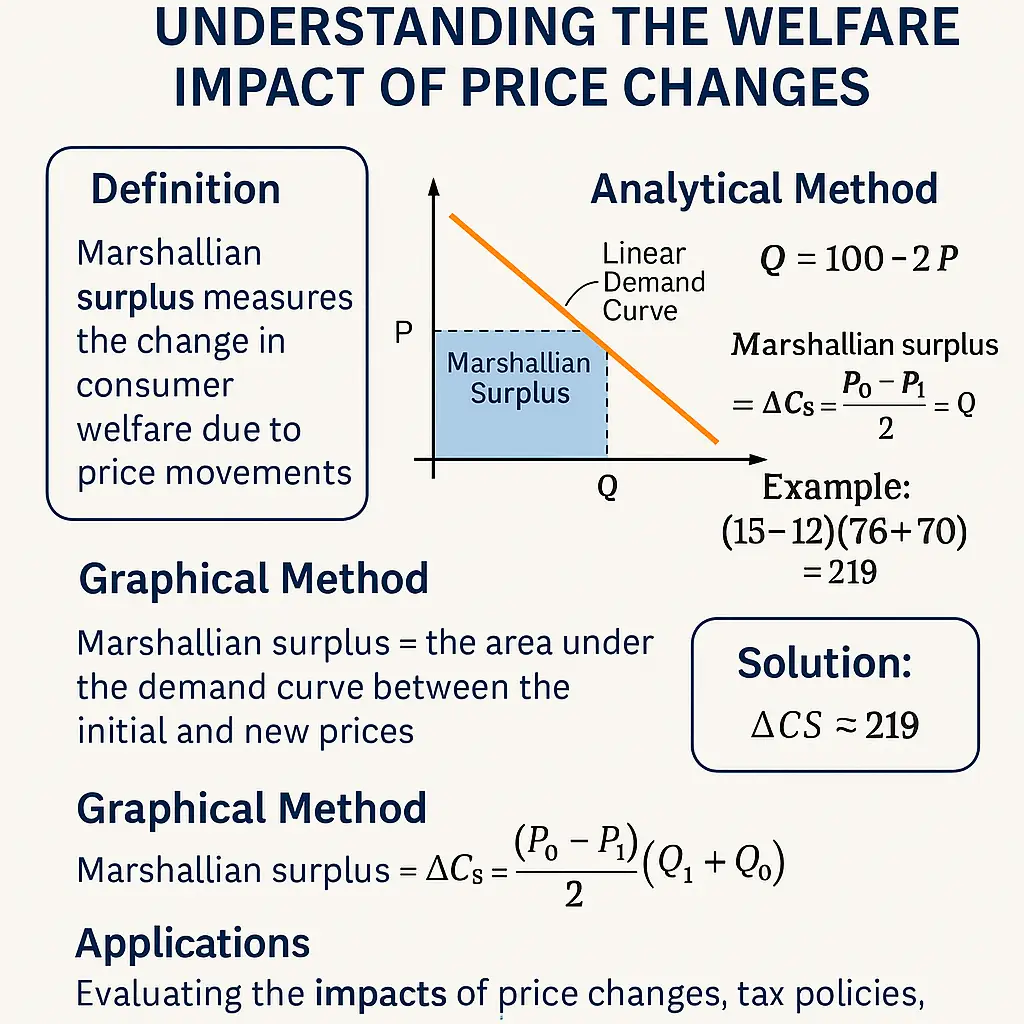Introduction
One of the most important questions in economics is: How does a change in price affect consumer welfare? The concept of Marshallian surplus, named after the economist Alfred Marshall, helps answer this. It quantifies changes in consumer surplus due to price variations and forms the basis for welfare analysis in competitive markets and public policy.
This article introduces the definition, graphical interpretation, and mathematical calculation of Marshallian surplus, focusing on its application to price shifts.
1. What Is Marshallian Surplus?
Marshallian surplus is a measure of the total benefit that consumers receive from purchasing goods, beyond what they actually pay. It is a refinement of consumer surplus that accounts for how welfare changes when market prices rise or fall.
It reflects the change in the area under the demand curve due to a change in price.
2. Graphical Explanation
Consider a downward-sloping demand curve. If the market price falls:
- The consumer surplus increases (triangle expands)
- New consumers enter the market
- Existing consumers pay less for the same quantity
If the price rises:
- The consumer surplus decreases (triangle shrinks)
- Some consumers exit the market
- Remaining consumers pay more
The change in area between the original and new price levels represents the Marshallian surplus gained or lost.
3. Mathematical Formulation
Let:
- : inverse demand function (price as a function of quantity)
- : initial price
- : new price
Then the change in consumer welfare (Marshallian surplus change) is:
Alternatively, if you integrate with respect to price (when demand is a function of price):
This computes the change in area under the demand curve from to .
4. Example: Price Drop and Welfare Gain
Let . Suppose price drops from to .
So, the Marshallian surplus increases by 500, reflecting a net welfare gain for consumers.
5. Economic Interpretation
- Policy evaluation: Marshallian surplus helps assess the impact of taxes, subsidies, tariffs, or price controls.
- Welfare comparison: It allows economists to compare consumer well-being before and after market interventions.
- Efficiency measurement: A decrease in Marshallian surplus can indicate inefficiency or loss from market distortions.
6. Summary Table
| Scenario | Effect on Marshallian Surplus |
|---|---|
| Price decreases | Surplus increases |
| Price increases | Surplus decreases |
| Elastic demand | Large change in surplus |
| Inelastic demand | Small change in surplus |
Conclusion
Marshallian surplus gives economists and policymakers a precise tool to evaluate how price changes affect consumer welfare. It connects individual demand behavior with market-level outcomes, using both graphical intuition and calculus-based analysis. Whether analyzing subsidies, taxes, or price regulation, Marshallian surplus remains a foundational concept in welfare economics.
Further Reading
- Varian, H. R. Intermediate Microeconomics
- Pindyck & Rubinfeld, Microeconomics

